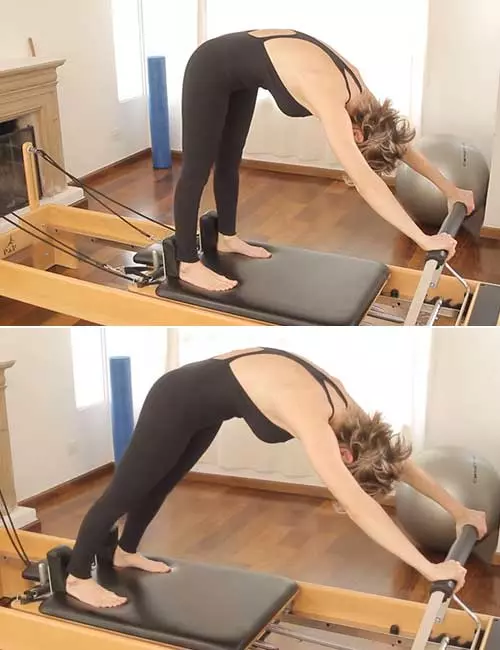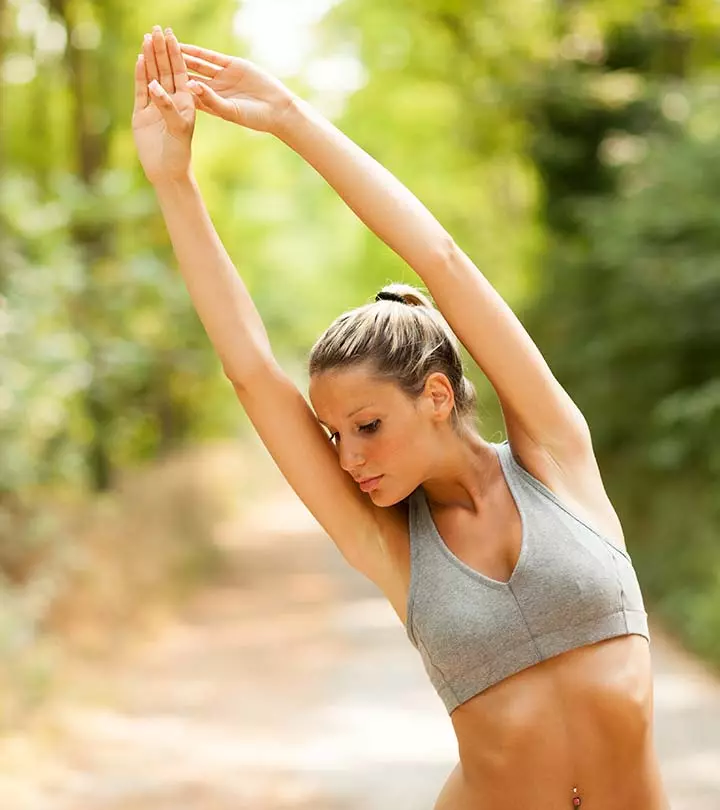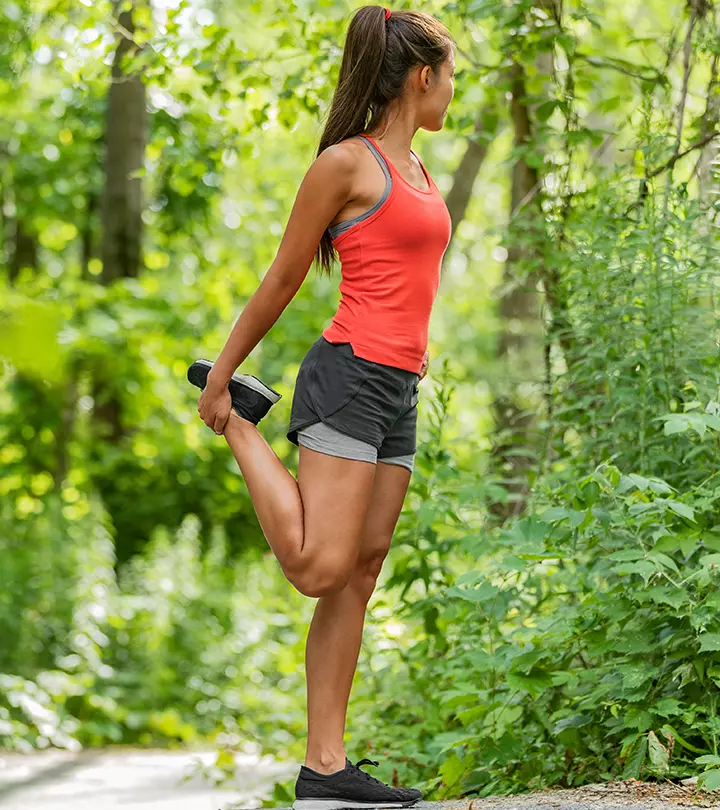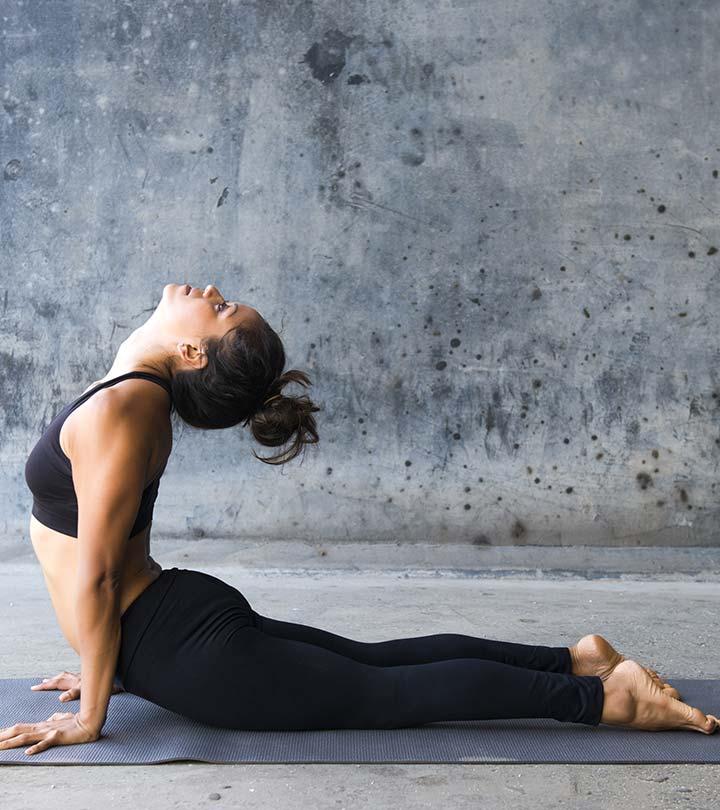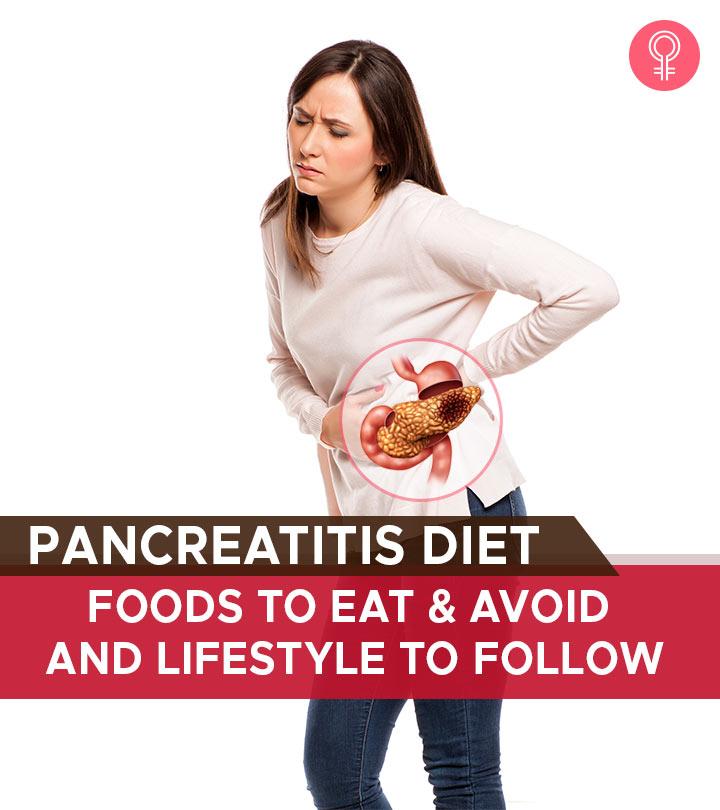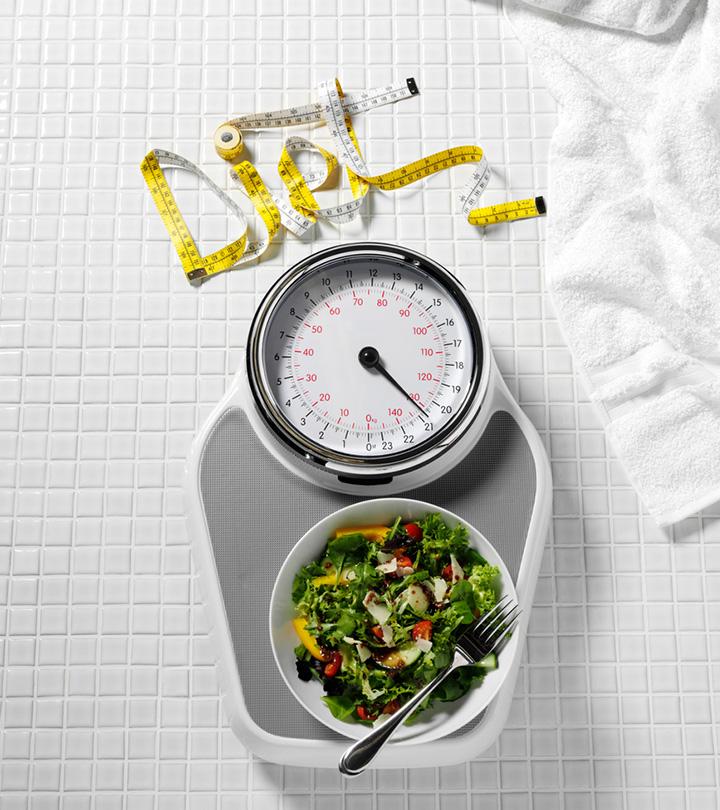10 Best Pilates Reformer Exercises And Benefits For A Fit Body
If cardio and running are not your things, try this workout for a fit and toned body.

Image: StyleCraze Design Team
Do you suffer from poor posture, a weak core, or lower back pain? Are you recovering from an injury and not able to do intense strength training or cardio yet? Then Pilates Reformer exercises are perfect for you! Pilates Reformer exercises are done lying down on a sliding bed-like structure with springs and include low-impact exercises that emphasize the core strength, body alignment, posture, control, coordination, stability, and a balance of strength and flexibility. Pilates Reformer exercises strengthen and lengthen your entire body and give you strong body awareness, control, and core strength that serve as a foundation for your fitness or rehabilitation program and help in injury prevention.
Are you ready to experience your body changing for the better? Read on to know 10 of the best Pilates Reformer exercises and their benefits. Swipe up!
In This Article
Pilates Reformer – What Is It And How To Use?
The Pilates Reformer was invented by Joseph Hubertus Pilates, a German physical trainer and founder of the Pilates Method. He invented Pilates Reformer machines by attaching springs to the bottom of hospital beds in order to rehabilitate injured war soldiers without impact.
The Pilates Reformer has a flat platform that can slide back and forth, and exercises are done lying, sitting, kneeling, or standing on the platform. Attached below this platform are 4-5 springs that provide different levels of resistance. The Reformer bed has shoulder blocks that secure your head and neck, align your shoulders, and help open your chest. At the end of the platform spring is an adjustable bar called the footbar. The feet or hands can be placed on the footbar to move the carriage in and out in order to strengthen the legs and upper body. The rectangular shape of the Reformer forces your body to work symmetrically, correcting any muscle imbalances.
You can do a variety of exercises on the Reformer. If you want the benefits of Pilates but are new to it, here are 10 Pilates Reformer body workouts for beginners. Take a look.
10 Pilates Reformer Exercises For Beginners
1. The Reformer Footwork
Target
Inner and outer thighs, glutesi The largest and strongest muscular group in the body, also referred to as the hips or the butt. , quadsi A large four-part muscle in the front of the thigh that extends along the leg. , hamstringsi One of the three muscles in the back of the thigh located between the hip and the knee. , calves, and abs.
How To Do
- Attach 4springs to the platform (maximum resistance).
- Lie down on your back on the Pilates reformer platform. Place the balls of your feet on the footbar, heels together and toes apart, to make a small V.Lift your heels and open your knees slightly so they align over your middle toes. Place your arms along your sides, palms flat on the platform, and shoulders against the shoulder blocks, pulling down away from your ears. Look at the footbar but keep your head down.
- Straighten your legs and squeeze your glutes to push the Reformer platform out, making sure your abs stay in and lower back stays flat on the mat.
- Hold this pose for a moment. Squeeze your glutes.
- Push your feet against the foot bar, bend your knees out over the centers of your feet, and return to the starting position with control.
Sets And Reps
4 sets of 10 reps
 Quick Tip
Quick Tip2. Leg Circles On The Pilates Reformer
Target
Abs, pelvis, inner and outer thighs, glutes, quads, and hamstrings
How To Do
- Attach 2 springs to the platform for the required resistance. Hook the extension strapsthrough the handles.
- Lie down on the platform with your knees bent, and feet pointed.
- Lift the straps over your head and then slide in one foot after another to secure your feet in the loops.
- Press your pelvis down, and place your arms long by your sides and palms flat on the platform. Start with your knees bent into your chest, tailbone down, and heels together, toes slightly apart in a small V.
- Extend your legs completely so that your legs are at a 45-degree angle with the platform. Keep your toes turned out and heels together. Make sure the straps fall inside your knees. Squeeze your glutes and pull your abs in to keep your lower back flat on the mat.
- Start moving your legs in small outward circles. Make sure your legs circle evenly and your pelvis stays still.
- After completing 5 reps, circle your legs in the opposite direction.
Sets And Reps
2 sets of 10 circles each way
3. The Frog On The Pilates Reformer
Target
Inner and outer thighs, abs, hamstrings, pelvis, and back
How To Do
- Attach 2 springs to the platform for the required resistance. Hook the extension straps through the handles of the other end of the footbar.
- Lie down on the platform with your knees bent and feet pointed.
- Lift the straps over your head and then slide in one foot after another to secure your feet in the loops.
- Press your pelvis down, place your arms long by your sides, and palms flat on the platform. Start with your knees bent into your chest, tailbone down, and heels together, toes slightly apart in a small V.
- Extend your legs completely so that your legs are at a 45-degree-angle and 60 degrees with the platform. Keep your toes turned out and heels together and pointed. Make sure the straps fall inside between your knees. Squeeze your glutes and pull your abs in to keep your lower back flat on the mat.
- Bend your knees into your chest, tailbone down, and heels together, toes apart, and repeat.
Sets And Reps
3 sets of 12 reps
4. Stomach Massage – Rounded
Target
Lower abs, pelvis, glutes, inner thighs, quads, and hamstrings.
How To Do
- Set 4 springs for resistance.
- Sit at the front of the Pilates Reformer platform. Place the balls of your feet on the footbar with your heels together and toes slightly apart, knees open shoulder-width apart. Hold the front edge of the platform lightly with your hands outside your knees so that your body remains stable.
- Curve your back by pulling your abs in and tuck your chin. Make sure there is still length in your spine; do not sink down. This is the starting position.
- Inhale, engage your abs, and extend your legs, squeezing your glutes and keeping your heels together. You will slide back as you do so.
- Exhale and bend your knees again. Come back to the starting position without leaning back or sinking down.
Sets And Reps
3 sets of 10 reps
5. Stomach Massage – Arms Back
Target
Lower abs, shoulders, back, chest, pelvis, glutes, adductors, quads, and hamstrings.
How To Do
- Set three springs for the resistance.
- Sit at the front of the Pilates Reformer platform. Place the balls of your feet on the footbar with your heels together and toes slightly apart, your toes on the foot bar, and knees open shoulder-width apart.
- Place your hands on top of the shoulder blocks behind you and straighten your arms. Open your chest and press your shoulders down.
- Extend your legs and slide back. Lower your heels. Squeeze your glutes to keep your heels together the entire time.
- Again, bend your knees and slide forward. Lift your heels to the starting position. Keep your posture tall
- Repeat
Sets And Reps
3 sets of 10 reps
6. Short Box – Round Back
Target
Lower abdominals, spine
How To Do
- Place the accessory Reformer box over the shoulder blocks. Sit at a hand’s width from the back of the box, facing the footbar.
- Attach two heavy springs and secure your feet by sliding your feet under the resistance loop attached to the foot bar. Press your feet wide so that they are hip-width apart. Flex your feet so the loop is secured over the arches of your feet.
- Wrap your arms around your waist, lift up tall, and inhale.
- Exhale, pull your abs in, and round back to your tailbone.
- Hold this pose for a moment and come back up, keeping your abdominals in as you come forward.
Sets And Reps
3 sets of 10 reps
7. Short Box – Flat Back
Target
Abs, back, posture
How To Do
- Sit on the short box and secure your feet on the footbar by sliding them through the strap attached to the footbar.
- Place your hands on the back of your head. Keep your back straight.
- Slowly lean back with a flat back until your tailbone is in line with your heels.
- Come back up to the starting position, keeping your spine long.
Sets And Reps
2 sets of 10 reps
8. Elephant On Pilates Reformer
Target
Abs, glutes, hamstrings, calves, and quads.
How To Do
- Stand on the Pilates reformer platform. Put your heels against the shoulder blocks and flex your toes up. Place the palms of your hands on the foobar with elbows straight. Your hands should be shoulder-width apart.
- Tuck your chin and round your tailbone under you by pulling your abs in. Press your shoulders down by pulling down under your armpits.
- Squeeze your glutes, engage your abs, exhale, and push the platform back. Only move your hips. Send your hips back slightly to move the platform back while keeping your upper body stable.
- Inhale and bring the platform forward to the starting position by bringing your hips under you. Keep your lower back rounded and shoulders down.
Sets And Reps
3 sets of 5 reps
9. Knee Stretch On Pilates Reformer
Target
Knee strength, hamstrings, quads, calves, and abs.
How To Do
- Kneel down on the Pilates reformer platform. Come up on your knees and place your hands on the footbar. Make sure your hands are shoulder-width apart. Place the soles of your feet against the shoulder blocks, tuck your toes, and have your legs hip-width apart.
- Pull your abs in, sit back towards your heels, and round your spine. Keep your shoulders from pulling down. Tuck your chin so that your ears are between the elbows. Do not slouch or overly round your spine.
- Exhale, contract your abs, and hover your knees off the platform.
- Inhale, straighten your legs, press the platform out so that it slides back. Squeeze your thighs and glutes. Don’t let your lower back arch.
- Keeping your knees lifted, bend your knees under your hips and curl your tailbone under you. Repeat.
Sets And Reps
3 sets of 8 reps
10. Running on the Pilates Reformer
Target
Calves, hamstrings, quads, glutes, ankle strength
How To Do
- Lie down on your back on the Pilates reformer platform. Place your toes on the footbar, feet together, arms long by your sides, and palms flat down.
- Extend your legs straight.
- Lower your right heel down and bend your left knee. Do not let your knee roll in or disengage your glutes.
- Slide back up by lowering your left heel and straightening your left leg while bending your right knee and lifting your right heel.
- Keep alternating. Make sure your knees don’t roll in.
Sets And Reps
2 sets 20 reps
These 10 Pilates reformer exercises work your entire body in a no-impact and effective way that focuses on core and glute strength, proper alignment, and strengthening and lengthening your spine. Benefits of the Pilates Reformer include:
Pilates Reformer Exercise Benefits
- Stronger core
- Better posture
- Helps relievejoint pain
- Tones muscles
- Increases flexibility
- Improves balance
 Did You Know?
Did You Know?Proper form is key for Pilates exercises. Here are a few common mistakes that you must avoid.
Common Mistakes To Avoid
- Not breathing in and out – Make sure you exhale and inhale while doing the exercises (exhale on the effort to contract your abs).
- Moving too quickly – You must move slowly and with control and make sure you are engaging your muscles so that your Pilates session is most effective.Doing more reps is not what you should focus on. Do the exercises with precision.
- Not focusing on the movements – Focus on the movement of every body part. This will help you engage the right muscles and help you benefit from Pilates sessions.
Now, the main question is, how many calories can you burn by doing Pilates reformer exercises? Scroll down to find out.
Calories Burned In Pilates Reformer Exercises
You can burn anywhere between 250-450 calories in one session of Pilates reformer exercise. If you do it for 4 days a week, you will burn about 1000-1800 calories per week! However, the calories burned will also depend on your exercise levels, body weight, and time.
There are mainly two types of pilates practices that you can perform to gain health benefits. Learn about them in the following section.
Reformer Pilates vs. Mat-Based Pilates – What’s The Difference?
The main difference between mat pilates and reformer pilates is the level of resistance. There is no external resistance in case of mat pilates. It does not require the use of any equipment other than your comfy mat. Whereas, in reformer pilates, you have to use elastic straps or machines to build resistance. It focuses on movement on elevated surfaces.
Mat-based pilates is ideal for elders or those who just want to start out slowly, and it is easy to do. On the other hand, reformer pilates offers more support and helps you maintain posture but may be more difficult to do for some.
Infographic: 3 Most Effective Pilates Reformer Exercises
Pilates reformer exercises are low-impact exercises that help correct poor posture, weak core, and lower back pain. They are an excellent way of keeping your body toned and healthy. We have rounded up the 3 most effective pilates reformer exercises that you can incorporate into your workouts. Check out the infographic below to know more!

Illustration: StyleCraze Design Team
Pilates reformer exercises stimulate the muscles without requiring you to huff and puff like you would with traditional cardio or weight lifting. These exercises are the best way to tone the body, strengthen the core muscles, improve posture and range of motion,, provide tension relief and relaxation, reduce joint discomfort and muscle tension, and make workouts fun and enjoyable. You will also gain immense mental health benefits and a fit and toned body. So go ahead and sign up for a Pilates reformer class right now.
Frequently Asked Questions
How many times a week should you do Pilates reformer?
Practicing 2-3 times a week should be good to start with and maintain good results.
What should I eat before Pilates reformer?
Snacks like nuts, berries, almond butter, boiled egg, celery with hummus, greens smoothie, cheese, and protein bars can all help you fuel up before a pilates reformer session.
Is it better to do Pilates in the morning or at night?
Morning is a better time as there are fewer distractions, and your body is well-rested.
Is 20 minutes of Pilates a day enough?
Yes, for most people, 20 minutes per session and 2-3 sessions per week are good enough to see visible results.
Key Takeaways
- Pilates reformer exercises are widely renowned for improving overall fitness and flexibility.
- Some of the best Pilates reformer exercises include reformer footwork, leg circles, short box, and more.
- Regular practice of these exercises helps to maintain a healthy and balanced lifestyle.
- Always seek guidance from a trained instructor when using a Pilates reformer to ensure safety and prevent injury.

Image: Stable Diffusion/StyleCraze Design Team
Start your Pilates journey with an effective 20-minute full-body workout for beginners. Watch this video to learn the basics of Pilates and enjoy a satisfying session from the comfort of your own home.
Read full bio of Gabbi Berkow
Read full bio of Arshiya Syeda
Read full bio of Aparna Mallampalli













